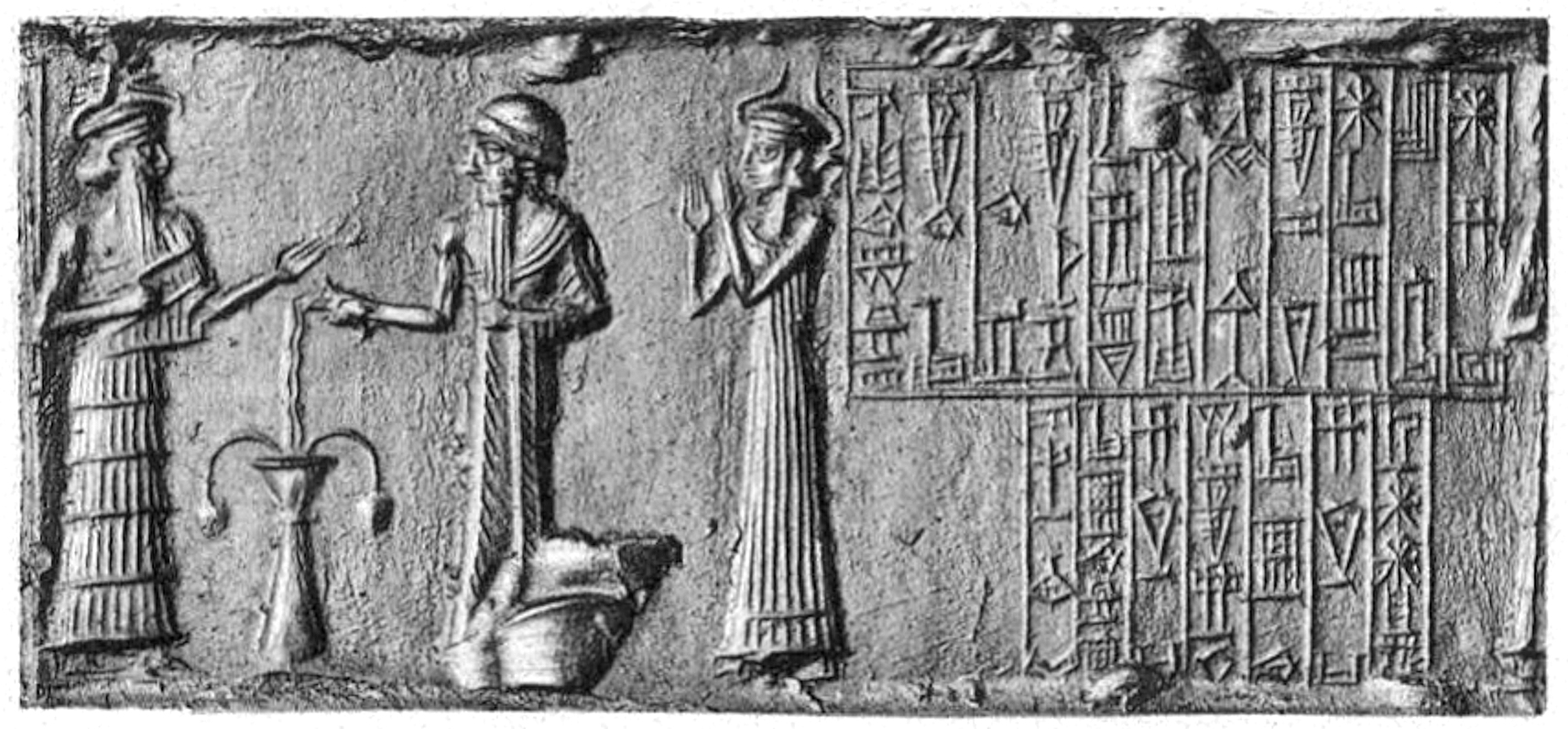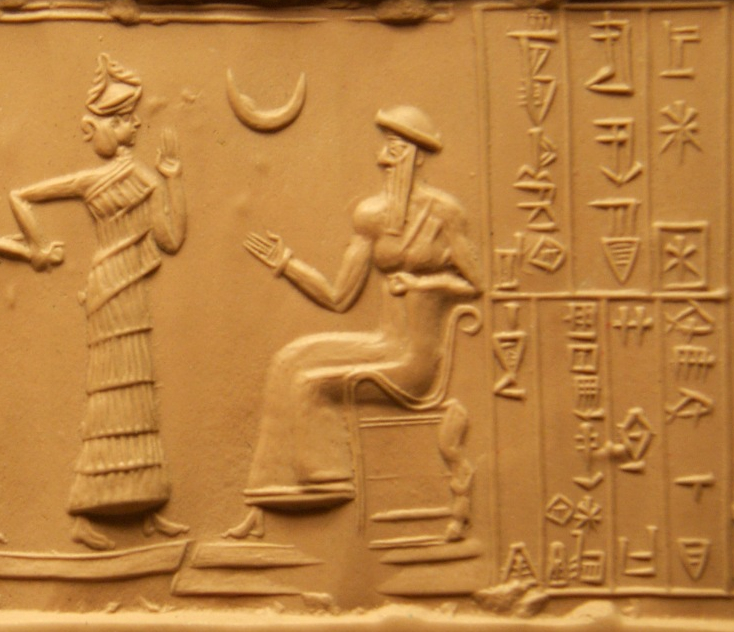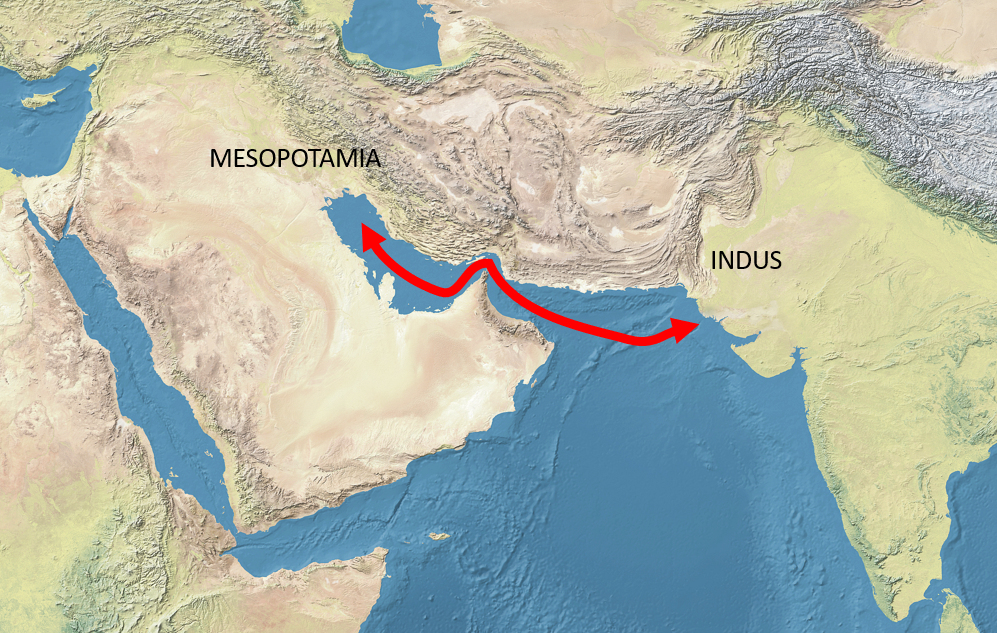Ur and the Neo-Sumerian period: The resurgence of Sumerian civilization
The Neo-Sumerian Period, often referred to as the Third Dynasty of Ur (Ur III, ca. 2112–2004 BCE), represents a remarkable resurgence of Sumerian civilization following the decline of the Akkadian Empire and the instability caused by Gutian incursions. Centered in the city of Ur, this era is celebrated for its administrative sophistication, economic reforms, monumental architecture, and cultural renaissance. It marked the final flourishing of Sumerian dominance in Mesopotamia before the region transitioned into the era of Amorite and Babylonian hegemony.

Map showing the Ur III state and its sphere of influence. Source: Wikimedia Commonsꜛ (license: CC BY-SA 3.0)
Historical context: The rise of Ur III
The Neo-Sumerian Period arose during a time of political fragmentation and economic recovery in Mesopotamia. After the collapse of the Akkadian Empire, Mesopotamia was left vulnerable to invasions, particularly from the Gutians, a group originating in the Zagros Mountains. These invasions disrupted urban centers and trade networks, leading to a period of decentralization.

Empire of the Third Dynasty of Ur (in green), with territory, zone of influence, and colonial outposts, at their greatest. West is at top, North at right. Source: Wikimedia Commonsꜛ (license: CC BY-SA 3.0)
Uruk and Lagash initially emerged as key centers of resistance to Gutian control, with rulers such as Utu-hegal of Uruk achieving temporary victories. However, it was Ur-Nammu, the first king of Ur III, who consolidated power and established a stable regime centered in the city of Ur. By uniting much of southern Mesopotamia under his rule, Ur-Nammu laid the foundations for the Neo-Sumerian Period.
Governance and administration
The Ur III state is renowned for its sophisticated and highly centralized administration, which represents one of the most detailed examples of bureaucratic governance in the ancient world. Extensive records preserved on cuneiform tablets reveal a meticulous system of resource management, taxation, and labor organization. These tablets, many of which have been excavated from Ur and other Neo-Sumerian cities, provide unparalleled insights into the daily operations of the state.

Cylinder seal of King Shulgi. Source: Wikimedia Commonsꜛ (license: public domain)
The government organized the economy around large temple and palace estates, which controlled agricultural production, craft industries, and trade. Taxes were collected in kind, often in the form of grain or livestock, and redistributed to sustain the urban population and support state-sponsored construction projects. The use of standardized weights and measures facilitated trade and administration, demonstrating the state’s emphasis on uniformity and efficiency.
Ur III kings, such as Ur-Nammu and his successor Shulgi, implemented legal and economic reforms to stabilize society and enhance productivity. The Code of Ur-Nammu, one of the earliest known legal codes, reflects the king’s role as a guarantor of justice and order. Its provisions address issues such as property rights, penalties for theft, and protections for vulnerable members of society, offering a glimpse into the social values of the time.


Left: Enthroned King Ur-Nammu, founder of the Third Dynasty of Ur, on a cylinder seal. Inscription of the upper segment: “Ur-Nammu, the Great man, King of Ur”. Source: Wikimedia Commonsꜛ (license: CC BY-SA 2.0) – Right: Ur-Nammu dedication tablet for the Temple of Inanna in Uruk. Inscription “For his lady Inanna, Ur-Nammu the mighty man, King of Ur and King of Sumer and Akkad”. Source: Wikimedia Commonsꜛ (license: CC BY-SA 1.0)
Monumental architecture: The Ziggurat of Ur
The Neo-Sumerian rulers are particularly noted for their monumental building projects, which symbolized the power and piety of the state. Among these, the Ziggurat of Ur, constructed by Ur-Nammu, stands as an iconic example of Mesopotamian architecture. This massive step pyramid, dedicated to the moon god Nanna (Sin), served as both a religious center and a visible testament to the king’s divine mandate.

Ur-Nammu built the great Ziggurat of Ur. Source: Wikimedia Commonsꜛ (license: CC BY-SA 3.0)
The ziggurat’s design reflects advanced engineering and organizational capabilities. Constructed of mud bricks with a core of compacted earth, it featured multiple tiers, each accessible via a grand staircase. The temple at its summit functioned as a sacred space for rituals and offerings, emphasizing the intimate connection between the divine and the state.
Ziggurat of Ur. Source: Wikimedia Commonsꜛ (license: CC BY-SA 3.0)
The ziggurat was not merely a religious structure; it also played a central role in the social and economic life of Ur. Surrounding administrative buildings housed scribes, priests, and officials who managed temple activities and coordinated the labor required for its upkeep.
Cultural and literary achievements
The Neo-Sumerian Period witnessed a renaissance in Sumerian culture, particularly in literature, religion, and the arts. While Akkadian had become the dominant spoken language in Mesopotamia, Sumerian remained the language of scholarship, religion, and administration during Ur III. This period saw the compilation of many literary works that celebrated the divine, extolled the achievements of kings, and reflected on human existence.


Left: Foundation statue of Ur-Nammu. Source: Wikimedia Commonsꜛ (license: CC BY-SA 4.0) – Right: Three foundation cones from southern Iraq, containing the the names of Gudea, Ur-Nammu, and Lipit-Ishtar. From Ur, Kish, and Warka, Iraq. Iraq Museum. Source: Wikimedia Commonsꜛ (license: CC BY-SA 4.0)
Hymns and royal inscriptions played a key role in legitimizing the authority of the Ur III kings. Shulgi, in particular, commissioned numerous texts that depicted him as a godlike figure, capable of extraordinary feats in governance, warfare, and scholarship. These texts not only glorified the king but also reinforced the ideological foundations of the state.
The period also saw the standardization of myths and religious practices, preserving Sumerian cosmology for future generations. The emphasis on continuity and tradition underscores the Neo-Sumerian rulers’ efforts to present themselves as restorers of a golden age of Sumerian civilization.
Economic stability and international trade
Under the Neo-Sumerian rulers, southern Mesopotamia experienced significant economic recovery. The state invested in large-scale agricultural projects, including the maintenance of irrigation systems and the reclamation of previously abandoned lands. These efforts increased agricultural yields and supported the dense urban populations.

Cylinder seal of King Ur-Nammu. Seals like this were used to authenticate documents and containers. They were enrolled on clay tablets and impressed on the wet clay. Source: Wikimedia Commonsꜛ (license: CC BY-SA 2.0)

Plan of a real estate of the city of Umma, with indications of the surfaces of the parts. Third Dynasty of Ur. Source: Wikimedia Commonsꜛ (license: CC BY-SA 3.0)
Trade flourished during this period, extending beyond Mesopotamia to regions such as the Persian Gulf, Iran, and the Levant. Merchants from Ur engaged in the exchange of commodities like textiles, metals, and precious stones, bolstering the city’s economic power. The importance of trade is reflected in administrative texts that detail transactions, trade routes, and partnerships.

Trade routes between Mesopotamia and the Indus would have been significantly shorter due to lower sea levels in the 3rd millennium BCE. Source: Wikimedia Commonsꜛ (license: CC BY-SA 3.0)
Decline and legacy
Despite its achievements, the Ur III state was not immune to the challenges that plagued earlier Mesopotamian empires. Internal strife, combined with external pressures from groups such as the Amorites and Elamites, gradually weakened the state. By 2004 BCE, Ur was sacked by the Elamites, marking the end of the Neo-Sumerian Period.
The legacy of Ur III, however, endured. Its administrative practices influenced subsequent Mesopotamian states, including the Old Babylonian Empire. The literary and religious traditions preserved during this period continued to shape Mesopotamian culture for centuries, ensuring that the Sumerians’ contributions to human civilization were not forgotten.
Conclusion
The Neo-Sumerian Period, centered in Ur, represents a remarkable chapter in Mesopotamian history. Through its administrative innovations, architectural achievements, and cultural renaissance, the Third Dynasty of Ur revitalized Sumerian civilization and left an enduring legacy. By studying this period, we gain deeper insights into the resilience and ingenuity of ancient societies as they navigated the complexities of governance, economy, and culture.
References and further reading
- Wikipedia article on Urꜛ
- Wikipedia article on the Third Dynasty of Urꜛ
- Marc Van De Mieroop, A History of the ancient Near East ca. 3000 - 323 BC, 2024, John Wiley & Sons, ISBN: 9781394210220
- Samuel Noah Kramer, The Sumerians - Their History, Culture, And Character, 1971, University of Chicago Press, ISBN: 9780226452388
- Harriet E. W. Crawford, Sumer and the Sumerians, 2004, Cambridge University Press, ISBN: 9780521533386
- Harriet E. W. Crawford, The Sumerian World, 2013, Routledge, ISBN: 9780415569675
- Michalowski, P., The Correspondence of the Kings of Ur: An Epistolary History of an Ancient Mesopotamian Kingdom, 2011, Eisenbrauns, ISBN: 978-1-57506-194-8
- Gwendolyn Leick, Mesopotamia - The invention of the city, 2001, Allan Lane, ISBN: 9780713991987






















comments